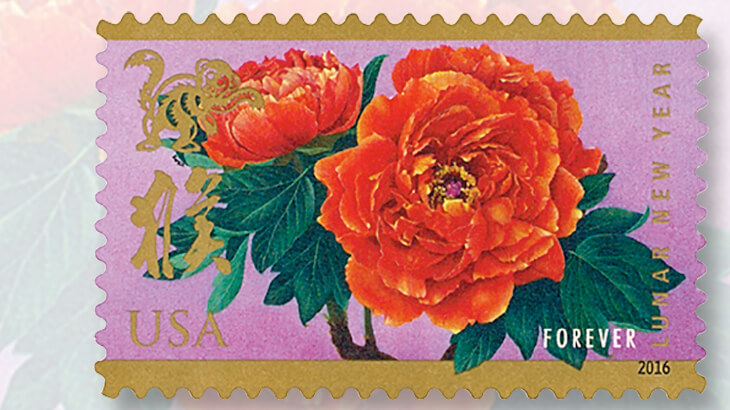Postal Updates
U.S. Postal Service remains silent on demise of imperforate uncut press sheets

By Bill McAllister
To the dismay of many collectors, the United States Postal Service appears to have killed one of its most profitable new products: uncut press sheets of imperforate stamps.
Although the Postal Service’s chief stamp executive promised to announce a decision on the future of the sheets by end of 2016, there has been no word from USPS headquarters about the future of the sheets.
Sales of the imperforate press sheets had created a boomlet of excitement in the hobby during the almost four years that they were produced.
Produced with virtually no added costs, press sheets of imperforate self-adhesive stamps were hot sellers from the moment the first sheets went on sale in July 2012 with the issuance of the Major League Baseball All-Stars stamps.
But five years later, the sheets have become mired in controversy.
Connect with Linn’s Stamp News:
Sign up for our newsletter
Like us on Facebook
Follow us on Twitter
The last issue to be offered in imperforate uncut press sheets was the Chinese New Year stamp issued Feb. 5, 2016 (Scott 5057).
The absence of any new issues has convinced collectors that the USPS has abandoned issuing more imperforate sheets.
“I think it is pretty obvious that they have stopped production of no die-cut press sheets,” said Cincinnati collector Jill R. Ambrose, co-author of A Guidebook and Checklist — U.S. Postal Service No-Die-Cut Stamps 2012 to 2015.
“I have no idea why USPS stopped production,” Ambrose said in an email to Linn’s.
She was among the collectors who have urged the USPS to continue issuing the sheets, citing the large amount of cash their sales can bring a postal service in need of increased revenues.
Sales of uncut press sheets with die cuts around the stamps have continued, but it was the imperforate uncut sheets that triggered much of the excitement among collectors.
Stamps from the imperforate sheets were seen as a new part of the hobby and were assigned separate numbers by the Scott catalog editors.
The Postal Service said in February it would issue die-cut uncut press sheets in a “standard print quantity” of 1,000.
Postal officials have said little more than the program was being reevaluated, Ambrose said.
Whatever prompted the Postal Service’s apparent decision to cease production of the imperforate press sheets remains unknown.
When Linn’s inquired May 23 about the promise of a decision on the uncut sheets by Stamp Services officials by the end of 2016, postal officials promised an answer.
But the answer, provided May 30, was the recycling of a brief statement first given to Linn’s in mid-February that does not mention the imperforate sheets.
“The Postal Service is committed to providing products for the philatelic community and collectors; therefore, we will continue to produce die cut press sheets,” the statement said.
“Whether to issue a press sheet for a particular stamp is within the Postal Service’s discretion,” it continued.
“It has never been the Postal Service’s intention to produce press sheets for every stamp issuance.”
Foster Miller, a Maryland collector, told Linn’s he had sought an answer from Mary-Anne Penner, executive director of Stamp Services.
“Last time I asked Mary-Anne Penner, she said that she had nothing to announce,” Miller said.
“I, too, assume that they are not planning to do future press sheets without die cuts,” he added, noting that “they do continue to issue press sheets with die cuts for most issues.”
Ambrose told postal officials in an email last year that she believed the issue of imperforate press sheets represented a great money-making opportunity for the cash-hungry Postal Service.
“First of all, it seems like a wonderful money making project for the Postal Service,” she told Mark Saunders, a postal spokesman, in an email a year ago.
Sales of high denominated stamp sheets can run into hundreds of dollars for one sheet, she noted.
But by producing small numbers of some of the imperforate sheets, the USPS was hurting its own profits, she pointed out.
Saunders said postal officials were determined to make the sales fair to all, which might explain the decision to issue a uniform 1,000 die-cut uncut press sheets for a given issue.
It was the limited number of imperforate sheets of some of the early issues that sent dealer prices skyrocketing to eight times face value or more. In early 2016, the USPS came under fire for keeping imperforate press sheet quantities a secret until just before a stamp was officially issued.
Jim Siekermann, a coauthor of A Guidebook and Checklist with Ambrose, told Linn’s last year that clerks at the Stamp Fulfillment Services center in Kansas City, Mo., would sometimes give collectors misleading and conflicting information about the availability of some of the imperforate issues.
MORE RELATED ARTICLES
Headlines
-
US Stamps
Oct 7, 2024, 3 PMMcMurtrie dismissed as APS education director following Sept. 21 arrest
-
US Stamps
Oct 7, 2024, 12 PMVasiliauskas named president of Mystic Stamp Co.
-
US Stamps
Oct 6, 2024, 5 PMApgar souvenir card available
-
US Stamps
Oct 6, 2024, 4 PMFirst Continental Congress and U.N. stamps receive Scott catalog numbers








